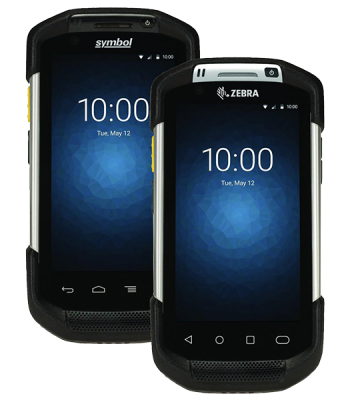The hangover from 2008’s downturn lingers – our Public Safety (PS) customers are still under pressure to cut budgets without sacrificing service quality and while meeting targets for protecting the public.
But is it realistic to maintain service, and, cut spending?
Well technology can certainly help. Especially RFID. RFID tags are widely used in industries such as retail, warehousing and logistics to track items through the supply chain. The tags are attached to items to give them a unique digital ID that can be read by fixed RFID readers (attached to walls), or, handheld computers, such as the MC9190-Z, used by your teams to easily identify, constantly track and record data from just about any asset.
So how can it be best used by firefighting services and what are the benefits? We see five main ones.

FIVE WAYS TO OPTIMISE EFFICIENCIES
1. PROTECT CRITICAL KIT:
With RFID you can easily track items – such as breathing apparatus, personal protection gear, clothing and more, as they’re moved from stores recording things like when items left the building, in who’s possession, and, when they were returned. As well as reducing the loss or theft of gear, automating data capture with handheld computers and standard forms saves time and improves data quality.
2. OPTIMISE HEALTH AND SAFETY:
Kit such as helmets, breathing apparatus and radios need to be expected often. RFID eases this process too. Labels on items can be scanned as items are inspected with all details updated in the relevant database while automatic updates can remind teams when an inspection is due. The technology creates smooth processes to ensure that assets are safe, usable and remain in the rig. Also, all data is retained and catalogued for audit purposes – with no paper, and no hassle.
3. ACCELERATE REPAIR:
Equipment in the workshop can be continuously tracked by being scanned when it arrives, as maintenance is carried out and when it leaves. This constant stream of status data flags when issues are taking too long to resolve and optimises workflows to get your kit back ‘on the run’ as soon as possible.
4. RIGHT SIZE INVENTORY:
By helping to create a complete and real-time view over your inventory, RFID track and trace solutions can feed data into buying systems. The systems automate buying against pre-determined low and high stock levels to ensure you always hold the right levels, avoid hoarding and better control budgets.
5. ANALYSE PERFORMANCE:
The data collected from RFID show’s where an asset is, who’s moved it and why, where it’s being used, and if it’s passed or failed recent tests. Over time trends emerge – such as higher than normal equipment failures in certain areas, how the workshop is performing and who’s holding too much stock. These insights allow you to improve equipment availability, pinpoint overspend, and, make better procurement decisions.
By automating, optimising and improving data capture, with easy to use handheld computers, your teams can record RFID tags with the minimum of fuss. And, to further reduce disruption, RFID solutions can be accessed over the cloud with the handled computers used by your team pre-configured, and, the labels for your equipment printed by third parties and set up in the system.
RFID delivers savings by reducing over-spend, ensuring equipment is well maintained, more available and more viable over its life-cycle, and, by shaving time from asset management. Critical too, it helps protect your teams by ensuring health and safety checks are always up to date.
BlueLight can provide more information on RFID tags and other similar labelling solutions. Visit our labelling web page for more information: Or contact the team on: 0844 879 4531 – enquiries@csseurope.co.uk


